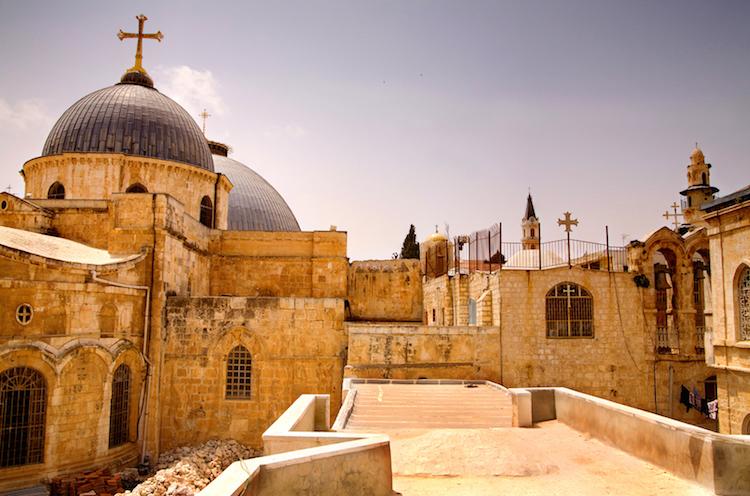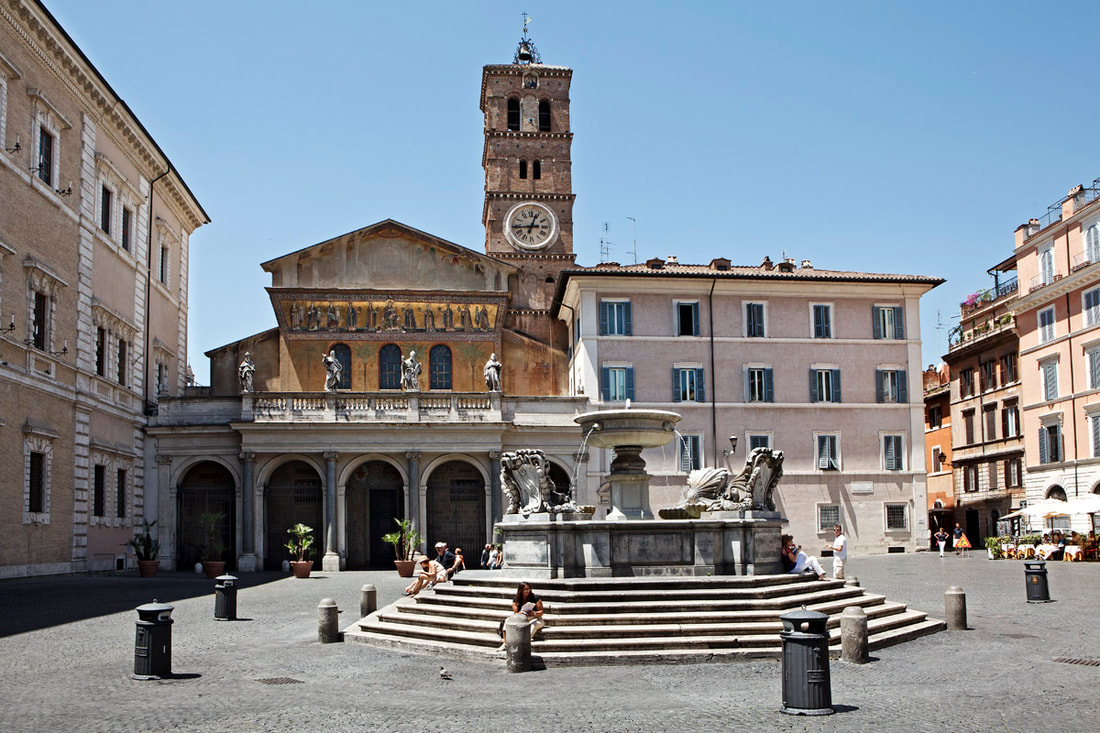Top 10 Oldest Churches in the World 2025
By ICON TEAM | Published on Apr 22, 2025
List Of Top 10 Oldest Churches in the World 2025:
Churches are living examples of faith, history, and human tenacity; they are more than just places of worship. Many of the oldest churches in the world some of which are almost two thousand years old have endured natural calamities, wars, and cultural changes while still functioning as places of worship or historical sites. These buildings, which range from modest house churches to imposing basilicas, provide insight into the nascent stages of Christianity and the creative architectural abilities of past societies. The top ten oldest churches in the world as of 2025 are examined in detail here, each with a distinctive history and lasting significance.
1. Dura-Europos Church, Syria (c. 233–256 AD):

An amazing archaeological discovery, the Dura-Europos Church in Syria is often considered to be the oldest known Christian church. This house church, which was first discovered in the 1920s in the ancient city of Dura-Europos, was a private home that was transformed into a place of worship between AD 233 and 256. Its simplicity and the proof it offers of early Christian activities during a period when Christianity was frequently practiced covertly make it significant. The church has a tiny meeting room and a baptistry with frescoes that include some of the first Christian artwork showing Christ walking on water and the Good Shepherd. The Dura-Europos Church is now in ruins as a result of centuries of neglect and recent wars in the area, but it nonetheless serves as a reminder of the early Christians' faith in the face of Roman persecution.
2. Megiddo Church, Israel (c. 230–305 AD):
One of the oldest intentionally constructed Christian buildings is the Megiddo Church, which was found in 2005 by prisoners working on a prison construction project close to Tel Megiddo, Israel. This late 3rd-century chapel has a well-preserved mosaic floor with Greek inscriptions that include early Christian symbols like the fish (Ichthys) and a dedication to "the God Jesus Christ." The site’s biblical importance, related to the expected battle of Armageddon, adds to its intrigue. Despite disagreements over whether it was a church or a Roman structure that had been renovated, its mosaics and inscriptions offer verifiable proof of early Christian worship. Although the church was probably abandoned in 305 AD during the Diocletianic Persecution, its finding has improved our knowledge of how Christianity expanded throughout the Holy Land.
3. Aqaba Church, Jordan (c. 293–303 AD):

The Aqaba Church in Jordan, which was built between 293 and 303 AD before Christianity was made lawful in the Roman Empire, is recognized by the Guinness World Records as the oldest known purpose-built Christian church. This simple stone and mud-brick building, which was excavated in 1998, had a nave, an apse, and a baptismal site. It could hold roughly 60 attendees. Its audacious existence during a period of persecution demonstrates the early Christians' bravery. The church's ruins, which were destroyed by an earthquake in 363 AD, provide a unique look at pre-Constantinian Christian architecture. The site, which is now protected as an archeological treasure, provides insight into the early history of the faith in the area.
4. Etchmiadzin Cathedral, Armenia (c. 301–303 AD):

The oldest state-constructed Christian church in the world is Etchmiadzin church in Vagharshapat, Armenia. The cathedral was built over a pagan temple and was founded by Saint Gregory the Illuminator after Armenia became the first country to declare Christianity as its official religion in 301 AD. The current building, which was constructed in 483 AD after the original was damaged, is still a UNESCO World Heritage Site and the spiritual center of the Armenian Apostolic Church. Its vaulted basilica design, with pointed domes and stone elements, evokes early Armenian architecture. Etchmiadzin, which is still open, is a popular destination and a representation of Armenia's Christian past.
5. Church of the Nativity, Bethlehem, Palestine (c. 327 AD):
One of the holiest places in Christianity is the Church of the Nativity in Bethlehem, which was constructed over the cave where Jesus Christ is thought to have been born. The church has been a continuous place of worship for about 1,700 years, having been commissioned by Emperor Constantine I in 327 AD. Parts of the ancient structure, especially the grotto, have survived invasions, fires, and reconstructions. The Door of Humility is a tiny Ottoman-era entrance found in the present Byzantine-style basilica, which was reconstructed in the sixth century. The church is a popular destination for visitors from all over the world and is recognized as a UNESCO World Heritage Site. It is shared by the Greek Orthodox, Armenian Apostolic, Roman Catholic, and Syriac Orthodox faiths.
6. St. Peter’s Basilica, Vatican City (c. 326–333 AD):
One of the most well-known buildings in the world is St. Peter's Basilica in Vatican City, which was first built on the tomb of the first pope, Saint Peter, by Emperor Constantine I. The ancient basilica, which was constructed between 326 and 333 AD, remained for more than a thousand years until being transformed into the opulent Renaissance and Baroque building it is today in the 16th century. Even though the existing structure is contemporary, the location is among the oldest functioning Christian locations because it has been used continuously as a place of worship since the fourth century. St. Peter's continues to be a pilgrimage site and the spiritual hub of the Catholic Church, home to treasures like Bernini's Baldachin and Michelangelo's Pieta.
7. Church of the Holy Sepulchre, Jerusalem (c. 333–335 AD):

As the location of Jesus's crucifixion, burial, and resurrection, Jerusalem's Church of the Holy Sepulchre is highly regarded. Constructed between 333 and 335 AD under Constantine I, it includes Christ's tomb and Golgotha. Parts of the original structure still stand, making it one of the oldest churches still in continuous operation despite multiple reconstructions brought on by earthquakes, fires, and invasions. The church is a collection of historic buildings and a popular destination for pilgrims. It is shared by several Christian denominations, including Greek Orthodox, Roman Catholic, and Armenian Apostolic. Its continued existence emphasizes how important it was to Christian history.
8. Monastery of Saint Anthony, Egypt (c. 311–356 AD):

One of the oldest monastery complexes is the Monastery of Saint Anthony in Egypt's Eastern Desert, which was established in the fourth century by followers of the founder of Christian monasticism, Saint Anthony. Constructed above his tomb, the monastery expanded to incorporate a garden oasis inside defensive walls, five churches, and a library. The complex is still inhabited by roughly 100 monks who uphold old customs, and its medieval Coptic wall paintings are a highlight. Being the oldest monastery still in continuous habitation, it has had a significant influence on the development of Coptic Christianity and monastic life globally.
9. Cathedral of Trier, Germany (c. 4th Century AD):

The oldest bishop's cathedral in Germany, the Cathedral of Trier, was built in the fourth century on the site of a former Roman palace that had been transformed into a Christian church. It has grown over the years and now contains artifacts such as a Holy Nail from the Crucifixion and the Seamless Robe of Jesus, which is said to be Christ's tunic. The cathedral's Romanesque and Gothic architecture reveals its lengthy history, and beneath it is one of the first Christian chambers north of the Alps. The cathedral in Trier, which is still in use today and is recognized as a UNESCO World Heritage Site, is evidence of the spread of Christianity throughout Europe.
10. Santa Maria in Trastevere, Rome, Italy (c. 340 AD):

One of Rome's oldest churches, Santa Maria in Trastevere, was built around 340 AD and is devoted to the Virgin Mary. The church was enlarged in the 12th century, adding a Romanesque bell tower, a golden façade, and magnificent mosaics by Cavallini that depicted Mary's life, although its oldest portions date back to the 3rd century. Its splendor is further enhanced by the portico from the 18th century. It is significant historically because it was among the first churches in Rome to publicly celebrate Mass following the legalization of Christianity in 313 AD. It is still in operation and draws pilgrims and historians with its artistic and architectural riches.
Comments 0